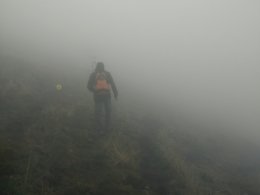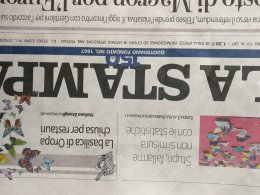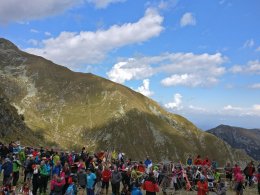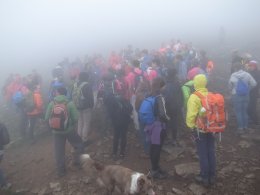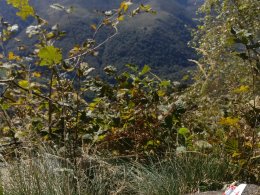The Map is not the Territory (Montedellarte) 2017
Cittadellarte-Fondatione Pistoletto
More information on The Map is not the Territory (Montedellarte) Video - Installation - Artist's book
On 1 October 2017, after a residence of 2 month in Cittadellarte-Fondazione Pistoletto, Griet Dobbels produced the art happening Montedellarte on M Cucco near Biella in the Italian Alps. A group of hikers drew a physical map in the landscape by walking along a contour line. With the collaboration of Cittadellarte, Club Alpino Italiano and Erasmus University College (Brussels). People from all over the world could watch and participate in the hike via the project website and app. The process of these dynamics resulted in new art work that is shown in The Map is not the Territory (Montedellarte) solo show in Museo del Presente at Cittadellarte-Fondazione Pistoletto (2018) and in Hoger Lager, solo show, Emergent (B), 2017
‘It is as though Meaning, which for centuries was linked to an ideal of permanence, solid and complete, had gone out in search of a new habitat, dissolving into a form that is mostly movement, extended structure, journey.’ Alessandro Baricco, The Barbarians. An Essay on the Mutation of Culture.The map is not the territory. Originally coined by the Polish-American philosopher Alfred Korzybsky (1879-1950), this term subsequently came to widespread attention via a similarly titled novel by Michel Houellebecq (The Map and the Territory, 2010). The Map is not the Territory, is about the fact that people sometimes confuse the representation of reality with reality itself. The mapping of a territory, therefore, does not constitute the actual territory. Despite our best efforts to control the world around us, we often fail. Perception does not always coincide with reality. The Map is not the Territory (Montedellarte) questions the correlation between perception and reality. Today, it is perfectly possible to see the world through the virtual eyes of Google maps. At the same time, the experience of a global and immense space gives rise to the need for a smaller scale. The Map is not the Territory (Montedellarte) is about the small and the great, the individual and a group, visibility and invisibility, an attempt at objectification and its failure, control versus the loss of control, chaos and order, nature and culture. The performance The Map is not the Territory (Montedellarte) is an attempt to draw a living map in the landscape. Will the line that arises be perfectly proportioned? Who decides where we go? Or do we decide for ourselves? Do we walk in groups? Like a herd of animals, a shoal of fish or a swarm of bees? And how do we deal with people who don’t cooperate? In Barbarians, Baricco describes the influence of the virtual world and our fear of losing control: ‘We see the looting but we fail to see the invasion. And, therefore, we do not to understand it. Believe me: you would have to look at it from above.’ The Map is not the Territory (Montedellarte) examines our contemporary relationship with the landscape and forges a link with the cultural and historical issues surrounding the relationship between nature and culture. The landscape is viewed as a set of contours which are, quite literally, designed. The contour forms the framework within which the individual finds a foothold. An invisible contour line in the landscape – a natural, geographical fact – is made visible. It is explored using the most sophisticated equipment, and is measured and marked. This produces scientific data. The aim is to achieve absolute accuracy, yet it remains a human undertaking. The audience participates. The walkers set off. The proliferation of individuals in the landscape is akin to a flock of birds, a shoal of fish or a herd of animals. This group is directed: the artist’s management of the group, and the dynamic that this fosters, is created both before and during the walk. The hike is the product of convincing people to walk.


